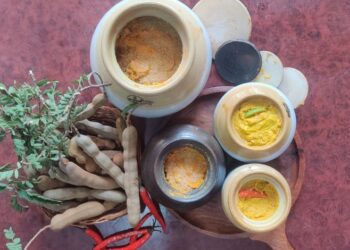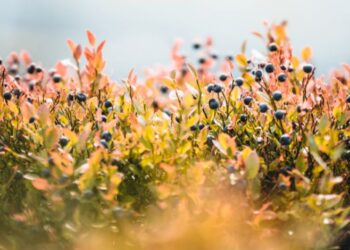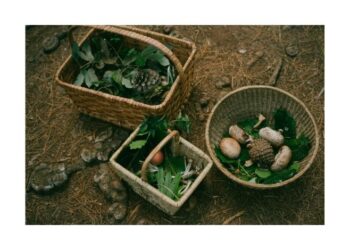Discover the joy of cooking with wild plants, try 3 delicious recipes this weekend using foraged ingredients from nature’s pantry.
It was right next to a state park. I had read about it, seen movies about it, and even looked it up in a guidebook that I always kept with me. But it’s strange to eat a wild green that you discover on the ground.
I didn’t die, so don’t worry. The wild-foraged chickweed salad tasted better, sharper, and more alive than anything I’d ever bought in a grocery store clamshell. That short excursion started a journey that is still going on today. I’ve eaten soups made with nettles, fritters made with dandelions, and even flatbreads made with acorns.
This book is for you if you’ve ever wanted to know what it’s like to start cooking with wild plants or eat wild food without becoming a full-blown bus craft survivalist.
What You'll Discover:
Why Should You Use Plants That Grow in the Wild to Cook?
Honestly, it sounds daunting to walk outside and look for food at first. Are we talking about Bear Grylls feeding bugs under moss? Or eating bitter roots to stay alive in the woods? No, thank God. When you cook with wild herbs, it’s not just about staying alive; it’s about forging connections.
Connect to the region.
To the rest of the globe.
How people used to eat before plastic wrap was used to cover everything.
Getting food from the wild is a little like stealing. Some people say it’s better for you, lasts longer, and costs less. Also, saying “Oh, this pesto?” to your guests makes you feel like a wonderful cook. It has mustard and wild garlic in it. That’s the magic of cooking with wild plants, it adds flavor and story to every bite.
Here Are Some Fundamental Suggestions for Foraging and Being Safe Before You Start
Let’s talk about safety before we get into the recipes. It’s fun to cook using wild herbs, but not all the time. This small book of rules has been very useful to me:
- Know what kind of plant you have. Use at least two field guides that you trust or an app like Seek by iNaturalist.
- Don’t eat food that you discover on the side of the road, in dirty places, or on lawns that have been treated. Plants take up all the dirt and muck that is around them.
- Try a little bit before you try a lot. Even plants you can eat can make you feel ill if your body isn’t used to them.
- Forage in a way that is fair. You should never take more than a third of a patch. Leave some for animals and new plants.
- Be aware of the legislation in your area. Before you select, be sure it’s okay to forage on public land.
Do you understand? Awesome! Let’s get started with the cooking.
Creamy Wild Nettle Soup is the First Recipe
The name of the plant is Urtica dioica, which means “stinging nettle.”
I know that “stinging nettle” doesn’t sound like anything you’d want to eat. But please listen to me. After cooking, nettles lose their sting and turn into a deep, earthy green that tastes like a mix of spinach and green tea. They’re also full of calcium, iron, and vitamin C.
Where to find it: In early spring, look for nettles in wet, shady places, including by rivers or behind trees.
Personal note: When I pick nettles, I use gloves and long sleeves. Believe me, one inadvertent brush on your wrist will teach you that lesson for life.
Ingredients:
- 1 chopped onion
- Two cloves of garlic, chopped up
- 1 tablespoon of butter or olive oil
- 4 cups of fresh nettle leaves that have been cleaned and had their stems removed
- 3 cups of broth made from vegetables or chicken
- 1 small potato, peeled and cut into cubes
- Salt and pepper to taste
- Optional: a splash of cream or a dollop of yogurt
Instructions:
In a big pot, heat the olive oil and sauté the onion and garlic until they are tender.
Put in the broth and potato. Let it simmer until the potato is soft.
Carefully add the nettles. Cook for about 5 minutes, or until they are soft.
Blend the soup until it is smooth. If you want it rich, add salt, pepper, and a swirl of cream.
Serve with crusty bread and a sense of pride.
Tip for flavor: To make it taste more earthy, add a touch of nutmeg or lemon zest.
Recipe #2: Spring Salad with Chickweed and Violets
The plants are chickweed (Stellaria media) and common violet (Viola sororia).
Chickweed is one of the easiest edible weeds to find. It likes cool weather and soil that has been disturbed (like your backyard). It tastes gentle and a little like grass, which goes great with lemon and olive oil. Violets, on the other hand, give this salad a floral burst and a visual “wow” effect that makes it perfect for Instagram.
It felt like I was breaking the rules when I ate weeds and loved it for the first time.
Ingredients:
- 2 cups of chickweed (washed and with soft stems and leaves)
- ½ cup of violet flowers and foliage
- 1 small cucumber, cut into thin slices
- 1 radish, cut into thin strips
- Juice from half a lemon
- 1 tablespoon of olive oil
- Pepper and salt
- Optional: goat cheese or toasted sunflower seeds
Instructions:
Put the greens, flowers, cucumber, and radish in a basin and mix them together.
Add lemon juice and olive oil on top.
If you’re using extras, toss them in and season to taste.
This is great for lunch on a sunny Saturday. You can enjoy it outside with iced tea and a book.
Recipe #3: Pancakes with Dandelion Petals
The plant is a dandelion (Taraxacum officinale).
People don’t like dandelions, although they’re effectively free food from nature. Everything is tasty, but today we’re focusing on the bright yellow flowers, which give these light, sunny pancakes a hint of honey taste and a flash of color.
My niece called the petals “sunshine sprinkles” when she helped me select them for the first time. I really couldn’t think of a better name.
Ingredients:
- 1 cup of flour (whole wheat or all-purpose)
- 1 tablespoon of sugar or honey
- 1 teaspoon of baking powder
- ½ teaspoon of salt
- 1 cup of milk (from cows or plants)
- 1 egg
- ½ teaspoon of vanilla extract
- ½ cup dandelion petals (washed and checked for bugs!)
How to Do It:
Mix the dry ingredients in a bowl.
In another bowl, combine the wet ones.
Mix the dry and wet ingredients together, then gently fold in the dandelion petals.
Put a little oil on a pan or griddle and heat it up. For each pancake, use 1/4 cup of batter.
When the top is bubbling, flip it over. Put some syrup, butter, or whipped cream on top.
Just right for a leisurely Sunday morning. If you want to be fancy, add wild violet syrup or berry compote.
The Fun of Going Wild
There is more to cooking with wild plants than just food. It’s about taking things easy. It’s about paying attention to what grows under your feet. It’s about getting back some of the independence we gave up for ease.
I didn’t learn how to forage as a child. I used to think that only people who were really into survival or herbalism played with wild edibles. But here’s the thing: you don’t need to be an expert to start.. I’m just wondering. Just open. Just ready to try.
It’s very satisfying to change something wild and free into something that gives you energy. It ties you to something bigger, whether it’s a steaming bowl of nettle soup after a rainy hike, a chickweed salad picked from the edge of your garden, or waffles sprinkled with dandelion petals.
Want to Keep Looking?
Here are some suggestions to help your wild kitchen grow:
- Use garlic mustard or lamb’s quarters to make wild pesto.
- Make wildflower tea with yarrow, red clover, or violet leaves.
- Use plants like wild thyme or mugwort to make oils or vinegar that smell good.
- Keep the harvest by drying your own wild spice mixes!
And don’t forget that you don’t need a forest to find food. There are many plants that you can eat in cities, parks, and even on the sidewalk. You might not think so, but the wild is closer than you think. That’s one of the best parts of cooking with wild plants, it reminds you nature’s pantry is always open.
Key Takings
- So here’s my challenge to you: select one recipe this weekend. Only one.
- Put on some boots, take a basket (or a shopping bag, let’s not get too picky), and go acquire what you need.
- Use the things around you to make something with your own hands. Try it and see. Enjoy it.
- And if you do, please send me a picture. Put #WildWeekendCooking on your dish and showing it off.
- You might never look at “weeds” the same way again when you start cooking with wild plants.







